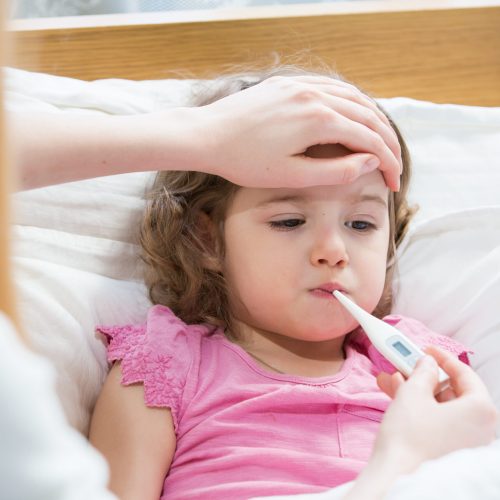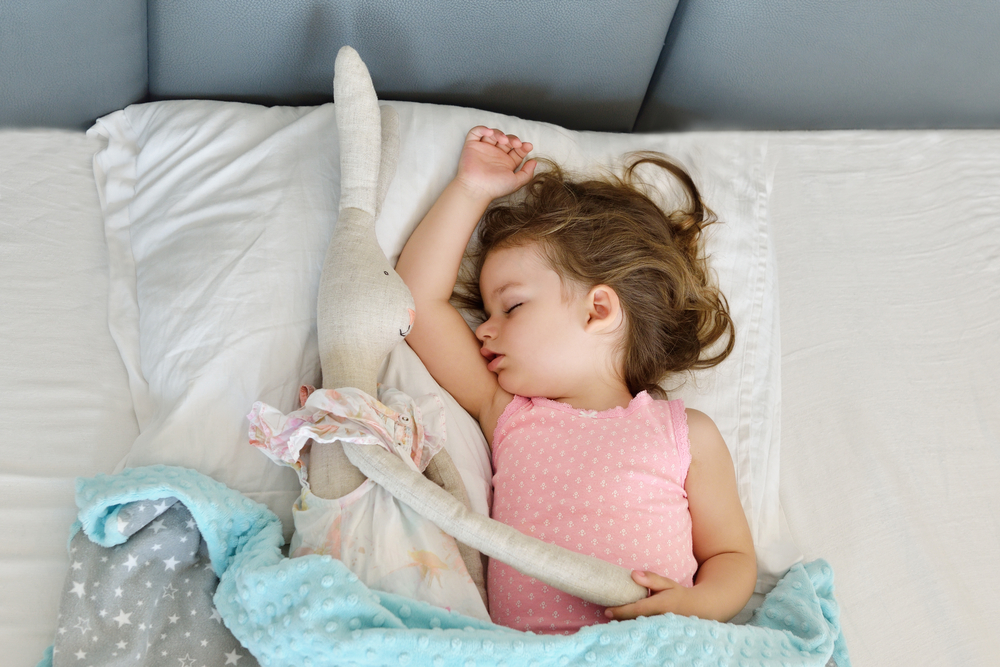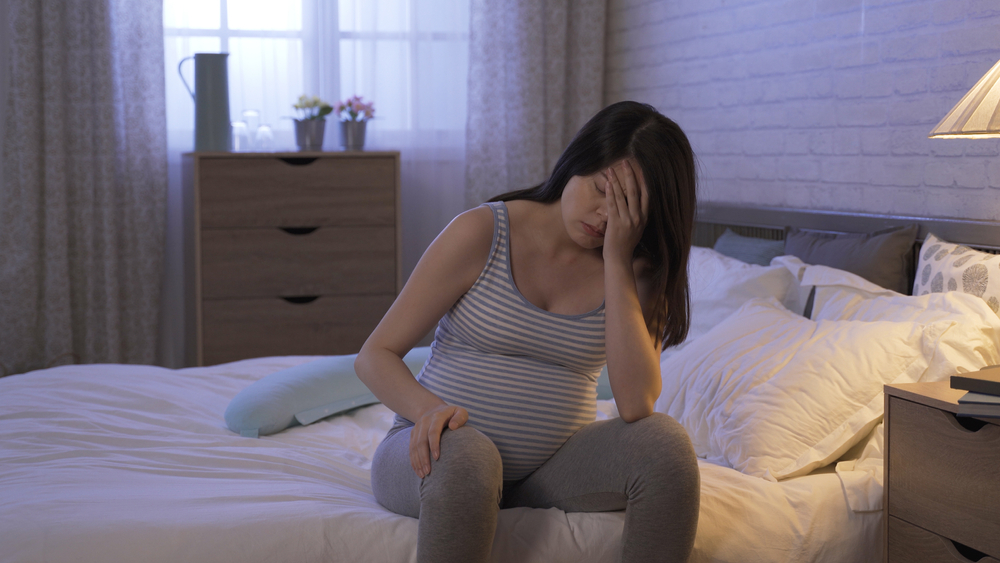This guide uses information from the American Academy of Pediatrics, the Cochrane Review, the National Institutes of Health, and other sources to review expert recommendations on how to break a fever in toddlers. (Or in other words: how to best treat your toddler’s fever.)
The main takeaway: Pediatric medical professionals repeatedly emphasize that under many circumstances, you don’t absolutely NEED to treat your toddler’s fever. If you do treat their fever, it should be to make them feel more comfortable – not to “break” the fever itself.
Read on to learn more about when experts say you should use medications to reduce your child’s fever, why they disagree about baths and sponge baths, what other options are available, and why fevers happen in the first place.
When to Try and Reduce Your Child’s Fever
The American Academy of Pediatrics says fevers in children over six months “probably do not need” to be treated unless your kid is uncomfortable. The main thing they recommend is watching how your child behaves. If they have a fever but are also drinking, eating, sleeping, and playing normally, the AAP says you can wait to see if the fever improves on its own. (An important exception to this rule is fevers among children who are under 3-4 months of age. In babies that little, fever may be the only sign of a serious infection and should be evaluated by a medical professional.)
Fevers on their own are not an illness, but a symptom of the body fighting off something, often an infection. The theory is that an increased body temperature can help kill off bad germs in the body. A fever alone doesn’t necessarily mean your child needs medical attention.
Children’s National Hospital had the following breakdown for parents of kids over 3-4 months to determine when a fever that needs medical care:
- A child of any age with a high fever above 104°F
- A child under two years with a fever of 100.4°F that lasts for more than one day
- A child two years and older with a fever over 100.4 that lasts more than three days
If your child’s fever is below those thresholds, you can decide to treat the fever if you think it will make your child more comfortable. Most medical experts said you do not need to wake up a sleeping child to give them medicine for a mild fever. Keep in mind that temperatures may vary depending on how you are taking your child’s temperature. The American Academy of Pediatrics recommends using a digital thermometer (no old-fashioned mercury thermometers.) They also have the following thresholds for determining a high temperature that is a true fever:
- Ear, forehead, or rectal temperature: 100.4°F
- Oral temperature: 100°F
- Under the arm (armpit) temperature: 99°F
Lastly, giving your child medication for a fever does not seem to prevent febrile seizures, especially if your child has had a febrile seizure in the past. These seizures can be very scary for parents, but most of the time have no negative side effects for kids. They happen in 2 to 4% of kids under 5 years old, and if your child has had one febrile seizure, they are more likely to have another. A 2013 study that looked at 540 children with febrile seizure found that medication to fight fevers did not reduce the rate of recurrent seizures.
Fever Medicine: Tylenol Vs. Motrin or Advil
If your child has a headache, body aches, or a fever that is making them uncomfortable, the AAP says you can consider giving your child fever-reducing medicines. Acetaminophen (Tylenol) and ibuprofen (Motrin/Advil) are the main medications you can give your child to reduce their fever and make them more comfortable.
Tylenol (acetaminophen) fights the fever directly, while Motrin/Advil (ibuprofen) has anti-inflammatory effects. In randomized trials, ibuprofen has been slightly more effective and longer-lasting than acetaminophen, but both have been shown to work against a placebo.
The AAP and other medical experts caution against using both Tylenol and Motrin/Advil because the dosages are different and can get confusing as you move between medications. Research has not shown that there is a significant reduction in fever when alternating medications.
You can find the AAP’s dosing information for acetaminophen (Tylenol) here and for ibuprofen (Motrin/Advil) here. Both are based first on your child’s weight. If you need to weigh your child and they are not able to stand still on a scale, you can first weigh yourself alone, and then while you are holding your child.
Other Ways to Break a Fever: Light Clothing
The AAP recommends:
- Keeping your child’s room “comfortably cool”
- Keeping them dressed in light clothing
- Encouraging them to drink water or fluids with electrolytes, like Pedialyte
- Stopping them from overexerting themselves
- Watch for signs of dehydration, like not urinating as frequently as normal
What NOT To Do to Break a Fever (Baths, Sponging)
You may see other websites offer baths and sponging your child with lukewarm water or cold water when they have a fever, but the American Academy of Pediatrics does NOT recommend this method. They say the water can cause shivering and can sometimes end up actually increasing your child’s temperature.
A randomized trial that compared giving children fever reducers medication and sponging to just medication alone found that adding sponging increased discomfort and reduced temperatures only for a short period of time. (One exception: If your child is experiencing a heat stroke or hyperthermia, conditions that are fatal and require immediate medical attention with fevers at 104 or 105F, sponging may help as you wait for medical assistance.)
The AAP also says …
- Do NOT Give your child aspirin. It has been linked to Reye’s syndrome (sometimes written as Reye syndrome) in young children, a serious illness that affects the liver and brain.
- Do NOT apply rubbing alcohol on your child to treat fever. The alcohol can be absorbed through the skin or inhaled and can cause a serious condition like a coma.
Basics of Fever
As mentioned above, a fever is not an illness itself, but a symptom of something else going on. According to experts it is most often caused by bacterial infections or viral infection. In addition to the common cold and flu, a urinary tract infection can cause fevers in young children (especially girls), as can ear infections and strep throat.
Meningitis is a less common but dangerous infection that can cause permanent brain damage. A high fever accompanied with a stiff neck is a tell-tale sign of meningitis and requires immediate medical attention.
And the AAP writes that Roseola is a “classic case” of unexplained fever in children between six months old and three years old. Typically a child would have a fever for 2 to 3 days, and then it will go away. A rash of small spots then appears on the chest and stomach, eventually spreading to the face. The rash disappears after 1 to 3 days and usually the child feels fine.
Sources
Treating Your Child’s Fever – HealthyChildren.org
Fever and Antipyretic Use in Children | Pediatrics | American Academy of Pediatrics (aap.org)
Combined and alternating paracetamol and ibuprofen therapy for febrile children – PubMed (nih.gov)
Acetaminophen Dosing Tables for Fever and Pain in Children – HealthyChildren.org
Ibuprofen Dosing Table for Fever and Pain – HealthyChildren.org



